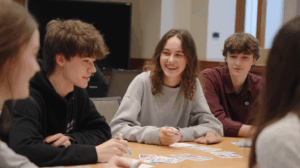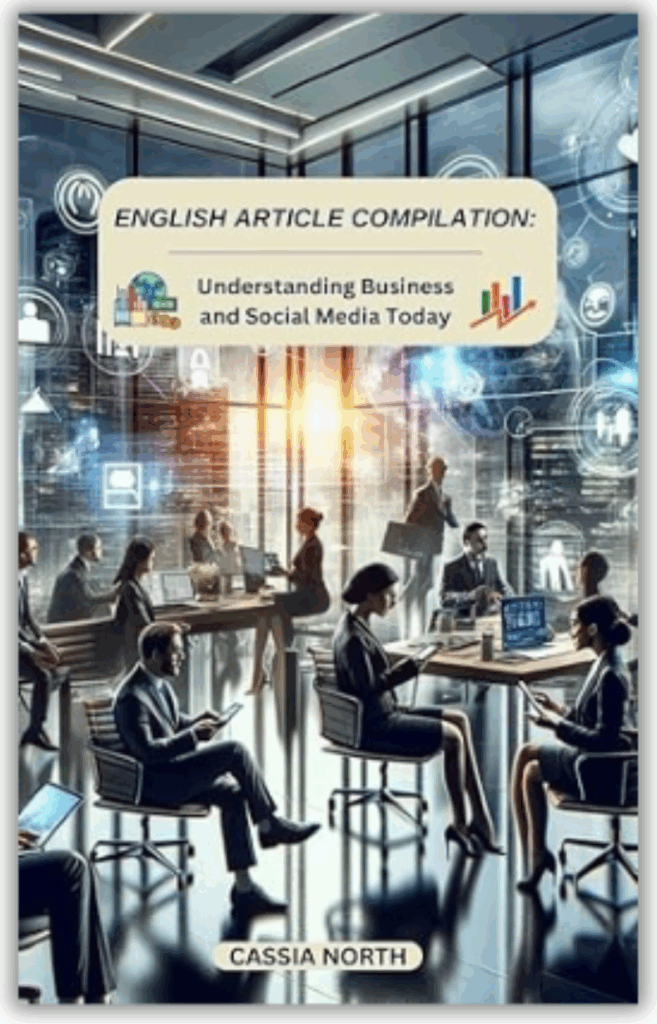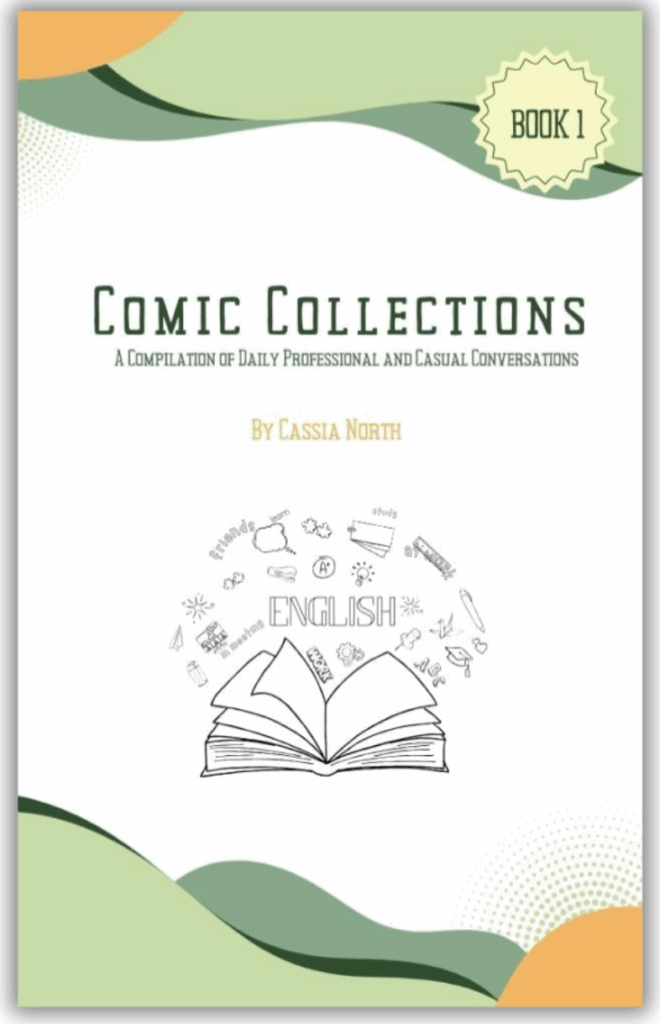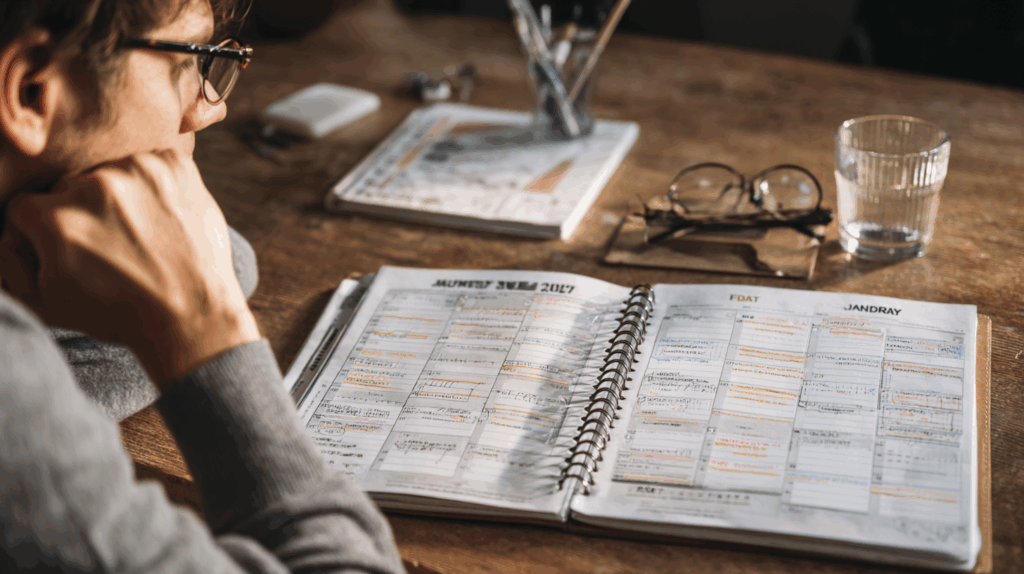
English Blogs
"Let's Learn, Explore, and Connect to the World"

Future (Be going to) 6
- Tokita Akira
- Basic English Grammar Blog

VI. Expanding Your Practice with 'Be Going To'
To achieve proficiency in using the ‘be going to’ construction for future intentions and plans, engaging in diverse and consistent practice is essential. Here are some effective strategies and resources to help you expand your practice and deepen your understanding of this important aspect of English grammar.
Interactive Exercises and Activities
 Future Plans Discussion: Engage in conversations or writing exercises where you discuss your future plans using ‘be going to’. Talk about your next vacation, career goals, or weekend plans.
Future Plans Discussion: Engage in conversations or writing exercises where you discuss your future plans using ‘be going to’. Talk about your next vacation, career goals, or weekend plans.
 Predicting Future Events: Practice making predictions about future events based on current evidence. This could involve discussing weather changes, outcomes of sports events, or global trends.
Predicting Future Events: Practice making predictions about future events based on current evidence. This could involve discussing weather changes, outcomes of sports events, or global trends.
 Role-playing Scenarios: Participate in role-playing exercises that require planning future actions. For example, simulate planning a trip, organizing an event, or making decisions about future studies or career moves.
Role-playing Scenarios: Participate in role-playing exercises that require planning future actions. For example, simulate planning a trip, organizing an event, or making decisions about future studies or career moves.
Enhancing Conversational Skills
 Daily Usage: Try to incorporate ‘be going to’ into your daily conversations. This could be as simple as telling a friend what you are going to do after work or discussing your plans for the next holiday.
Daily Usage: Try to incorporate ‘be going to’ into your daily conversations. This could be as simple as telling a friend what you are going to do after work or discussing your plans for the next holiday.
Writing Practice
 Journal Entries: Write journal entries about your future plans using ‘be going to’. Reflect on what you plan to achieve in the coming days, months, or years.
Journal Entries: Write journal entries about your future plans using ‘be going to’. Reflect on what you plan to achieve in the coming days, months, or years.
 Social Media Posts: Use social media to share your future plans or predictions about specific topics, employing the ‘be going to’ construction.
Social Media Posts: Use social media to share your future plans or predictions about specific topics, employing the ‘be going to’ construction.
Recommended Resources for Further Learning
 YouTube Channels: Watch educational videos on channels dedicated to English learning, particularly those that focus on verb tenses and future constructions.
YouTube Channels: Watch educational videos on channels dedicated to English learning, particularly those that focus on verb tenses and future constructions.
Listening and Comprehension Practice
 Podcasts and Audiobooks: Listen to podcasts or audiobooks where speakers often discuss future plans or predictions. Pay attention to how ‘be going to’ is used in different contexts.
Podcasts and Audiobooks: Listen to podcasts or audiobooks where speakers often discuss future plans or predictions. Pay attention to how ‘be going to’ is used in different contexts.
 Movies and TV Shows: Watch English movies and shows, noting how characters talk about their future plans or make predictions.
Movies and TV Shows: Watch English movies and shows, noting how characters talk about their future plans or make predictions.
Creative Writing
 Short Stories: Write short stories where characters are planning future actions. Focus on using ‘be going to’ to express their intentions and plans.
Short Stories: Write short stories where characters are planning future actions. Focus on using ‘be going to’ to express their intentions and plans.
 Future Scenarios: Create scenarios set in the future and describe them using ‘be going to’. This could be about technological advancements, environmental changes, or personal life in the future.
Future Scenarios: Create scenarios set in the future and describe them using ‘be going to’. This could be about technological advancements, environmental changes, or personal life in the future.
Conclusion
 Expanding your practice with the ‘be going to’ construction is key to mastering its use in expressing future plans and predictions. Through a combination of speaking, writing, listening, and engaging with educational resources, you can enhance your grasp of this essential aspect of English grammar. Regular practice and application in varied contexts will build your confidence and fluency in using ‘be going to’ for future intentions.
Expanding your practice with the ‘be going to’ construction is key to mastering its use in expressing future plans and predictions. Through a combination of speaking, writing, listening, and engaging with educational resources, you can enhance your grasp of this essential aspect of English grammar. Regular practice and application in varied contexts will build your confidence and fluency in using ‘be going to’ for future intentions.
Latest Blogs

Present Simple Tense 1
English Blogs “Let’s Learn, Explore, and Connect to the World” Present Simple Tense 1 I. Introduction to the Present Simple Tense in English Mastering the

Present Simple Tense 2
English Blogs “Let’s Learn, Explore, and Connect to the World” Present Simple Tense 2 II. Understanding the Present Simple Tense Definition and Structure At its
Reading comprehension quiz
Check out our books and more!

Comic Collections : A Compilation of Daily Professional and Casual Conversations (Book 3)
Discover the joy of conversation with “Comic Collections: A Compilation of Daily Professional and Casual Conversations,” a whimsically illustrated comic book that transforms talking into an adventure. Ideal for those eager to polish their chatting skills, this light-hearted guide is a trove of insights presented in a uniquely entertaining format.
Check out our Blogs!
Read our everyday blogs and gain new knowledge, skills, and inspiration to support your learning journey here in SEKAEL.


Learn through Common English Errors Blogs by recognizing and correcting everyday grammar and usage mistakes.







 Planned Future Actions: Reserve ‘be going to’ for actions you have planned or decided upon. This helps differentiate it from spontaneous decisions, which are typically expressed with ‘will’.
Planned Future Actions: Reserve ‘be going to’ for actions you have planned or decided upon. This helps differentiate it from spontaneous decisions, which are typically expressed with ‘will’. Predictions Based on Evidence: Use ‘be going to’ for predictions when there is observable evidence. For example, use it when commenting on imminent events based on what you see or know.
Predictions Based on Evidence: Use ‘be going to’ for predictions when there is observable evidence. For example, use it when commenting on imminent events based on what you see or know. Expressing Certainty: Opt for ‘be going to’ when you want to convey a sense of certainty about your plans or predictions.
Expressing Certainty: Opt for ‘be going to’ when you want to convey a sense of certainty about your plans or predictions. Confusing with ‘Will’: Avoid using ‘be going to’ for spontaneous decisions or uncertain predictions. Remember, ‘will’ is better suited for those contexts.
Confusing with ‘Will’: Avoid using ‘be going to’ for spontaneous decisions or uncertain predictions. Remember, ‘will’ is better suited for those contexts. Incorrect Verb Form: Always follow ‘going to’ with the base form of the main verb. A frequent mistake is using the -ing form or the past tense.
Incorrect Verb Form: Always follow ‘going to’ with the base form of the main verb. A frequent mistake is using the -ing form or the past tense. Overusing ‘Be Going To’: Be mindful not to overuse this construction. It’s not suitable for every future scenario, such as scheduled events or habitual future actions.
Overusing ‘Be Going To’: Be mindful not to overuse this construction. It’s not suitable for every future scenario, such as scheduled events or habitual future actions. Understanding the context is key in choosing between ‘be going to’, ‘will’, and other future forms. Consider the nature of your action or prediction – is it a firm plan, a spontaneous decision, or a scheduled event?
Understanding the context is key in choosing between ‘be going to’, ‘will’, and other future forms. Consider the nature of your action or prediction – is it a firm plan, a spontaneous decision, or a scheduled event? Role-Playing Exercises: Engage in role-plays that involve making plans or predictions about the future. This can help you practice using ‘be going to’ in appropriate contexts.
Role-Playing Exercises: Engage in role-plays that involve making plans or predictions about the future. This can help you practice using ‘be going to’ in appropriate contexts. Writing Practice: Write about your future plans or predictions using ‘be going to’. This can be through journal entries, emails, or social media posts.
Writing Practice: Write about your future plans or predictions using ‘be going to’. This can be through journal entries, emails, or social media posts. The nuances in using ‘be going to’ can often be subtle. Paying attention to native speakers and how they use this construction can provide valuable insights into its correct usage.
The nuances in using ‘be going to’ can often be subtle. Paying attention to native speakers and how they use this construction can provide valuable insights into its correct usage. Along with mastering ‘be going to’, expand your vocabulary with phrases and expressions that are commonly used to talk about the future. This will enhance your overall ability to discuss future plans and intentions.
Along with mastering ‘be going to’, expand your vocabulary with phrases and expressions that are commonly used to talk about the future. This will enhance your overall ability to discuss future plans and intentions. ‘Mastering ‘be going to’ for expressing future plans and intentions is a vital skill in English. By understanding its correct usage and being aware of common mistakes, you can significantly improve your ability to communicate about the future. Regular practice and attention to contextual cues will help you use this construction effectively.
‘Mastering ‘be going to’ for expressing future plans and intentions is a vital skill in English. By understanding its correct usage and being aware of common mistakes, you can significantly improve your ability to communicate about the future. Regular practice and attention to contextual cues will help you use this construction effectively.
















 Mastering the formation of questions and negatives using the ‘be going to’ construction is essential for expressing inquiries and negations regarding future plans and expectations. Understanding these structures enriches your ability to discuss and negotiate future scenarios with clarity and precision in English.
Mastering the formation of questions and negatives using the ‘be going to’ construction is essential for expressing inquiries and negations regarding future plans and expectations. Understanding these structures enriches your ability to discuss and negotiate future scenarios with clarity and precision in English.








 The choice to use ‘be going to’ often reflects more than just a grammatical decision; it involves the speaker’s perspective on the certainty and nature of the future event. It suggests a future that, in the speaker’s view, is almost already set in motion.
The choice to use ‘be going to’ often reflects more than just a grammatical decision; it involves the speaker’s perspective on the certainty and nature of the future event. It suggests a future that, in the speaker’s view, is almost already set in motion. In different cultural and linguistic contexts, the nuances of indicating future intentions can vary. In English, ‘be going to’ carries with it a sense of personal agency and a degree of certainty, making it a distinctive feature of expressing future plans.
In different cultural and linguistic contexts, the nuances of indicating future intentions can vary. In English, ‘be going to’ carries with it a sense of personal agency and a degree of certainty, making it a distinctive feature of expressing future plans. The ‘be going to’ construction is not just a way to speak about the future; it is a tool that reflects planning, certainty, and sometimes the inevitability of future events. Its correct usage is therefore pivotal in English communication, particularly in contexts where clarity about future intentions is essential. As we continue, we will explore how to form questions and negatives with ‘be going to’, along with common mistakes and tips for effective usage.
The ‘be going to’ construction is not just a way to speak about the future; it is a tool that reflects planning, certainty, and sometimes the inevitability of future events. Its correct usage is therefore pivotal in English communication, particularly in contexts where clarity about future intentions is essential. As we continue, we will explore how to form questions and negatives with ‘be going to’, along with common mistakes and tips for effective usage.









 The ‘be going to’ construction is a fundamental part of expressing future plans and intentions in English. Its proper use reflects not only a grasp of English grammar but also an understanding of the nuances in conveying future actions. In the next sections, we will delve deeper into its specific uses, how to form questions and negatives, and practical tips for its usage.
The ‘be going to’ construction is a fundamental part of expressing future plans and intentions in English. Its proper use reflects not only a grasp of English grammar but also an understanding of the nuances in conveying future actions. In the next sections, we will delve deeper into its specific uses, how to form questions and negatives, and practical tips for its usage.


 The mastery of various tenses in English plays a crucial role in effectively communicating time-related concepts, and among these, the ‘be going to’ construction is particularly significant for expressing future intentions and plans. This form is instrumental in everyday conversation, offering a way to talk about future events with a sense of immediacy and certainty. Its usage transcends various forms of communication, from casual discussions to more formal planning and forecasting.
The mastery of various tenses in English plays a crucial role in effectively communicating time-related concepts, and among these, the ‘be going to’ construction is particularly significant for expressing future intentions and plans. This form is instrumental in everyday conversation, offering a way to talk about future events with a sense of immediacy and certainty. Its usage transcends various forms of communication, from casual discussions to more formal planning and forecasting. The ‘be going to’ construction is not just a grammatical form; it is a bridge that connects present intentions to future actions. Unlike other future forms, which might convey simple predictions or scheduled events, ‘be going to’ is intimately tied to the speaker’s present intentions or the visible evidence suggesting a future outcome. This tense is deeply rooted in the present moment, reflecting decisions that, while not yet realized, are firmly set in the speaker’s mind.
The ‘be going to’ construction is not just a grammatical form; it is a bridge that connects present intentions to future actions. Unlike other future forms, which might convey simple predictions or scheduled events, ‘be going to’ is intimately tied to the speaker’s present intentions or the visible evidence suggesting a future outcome. This tense is deeply rooted in the present moment, reflecting decisions that, while not yet realized, are firmly set in the speaker’s mind. One of the unique aspects of ‘be going to’ is its distinction from other future forms like the simple future tense using ‘will’. While ‘will’ might denote a future action in a broader sense, ‘be going to’ often implies a plan or decision that has already been made. For instance, ‘I will travel to Paris’ might simply suggest a future action, but ‘I am going to travel to Paris’ implies a plan already in motion, perhaps with tickets booked or itineraries planned.
One of the unique aspects of ‘be going to’ is its distinction from other future forms like the simple future tense using ‘will’. While ‘will’ might denote a future action in a broader sense, ‘be going to’ often implies a plan or decision that has already been made. For instance, ‘I will travel to Paris’ might simply suggest a future action, but ‘I am going to travel to Paris’ implies a plan already in motion, perhaps with tickets booked or itineraries planned. The ‘be going to’ form is ubiquitous in everyday English. It appears in conversations about weekend plans, discussions about career aspirations, and even when making predictions based on current observations. Its prevalence makes it a vital component of English proficiency, not just for its grammatical correctness but for its role in accurately conveying future intentions.
The ‘be going to’ form is ubiquitous in everyday English. It appears in conversations about weekend plans, discussions about career aspirations, and even when making predictions based on current observations. Its prevalence makes it a vital component of English proficiency, not just for its grammatical correctness but for its role in accurately conveying future intentions. For learners of English, particularly for those whose native languages may not differentiate between future tenses as distinctly, mastering the ‘be going to’ construction is a significant milestone. It represents not just an understanding of English grammar but an ability to convey subtleties of intention and planning – a marker of fluency and comfort with the language.
For learners of English, particularly for those whose native languages may not differentiate between future tenses as distinctly, mastering the ‘be going to’ construction is a significant milestone. It represents not just an understanding of English grammar but an ability to convey subtleties of intention and planning – a marker of fluency and comfort with the language. The ‘be going to’ future tense is more than a grammatical rule; it is a key to effective communication about the future. It reflects a blend of present intentions and future actions, providing clarity and specificity in discussing what lies ahead. As we delve deeper into understanding, using, and mastering this essential tense, we’ll explore its formation, uses, and nuances, ensuring a comprehensive grasp of this vital aspect of English communication.
The ‘be going to’ future tense is more than a grammatical rule; it is a key to effective communication about the future. It reflects a blend of present intentions and future actions, providing clarity and specificity in discussing what lies ahead. As we delve deeper into understanding, using, and mastering this essential tense, we’ll explore its formation, uses, and nuances, ensuring a comprehensive grasp of this vital aspect of English communication.